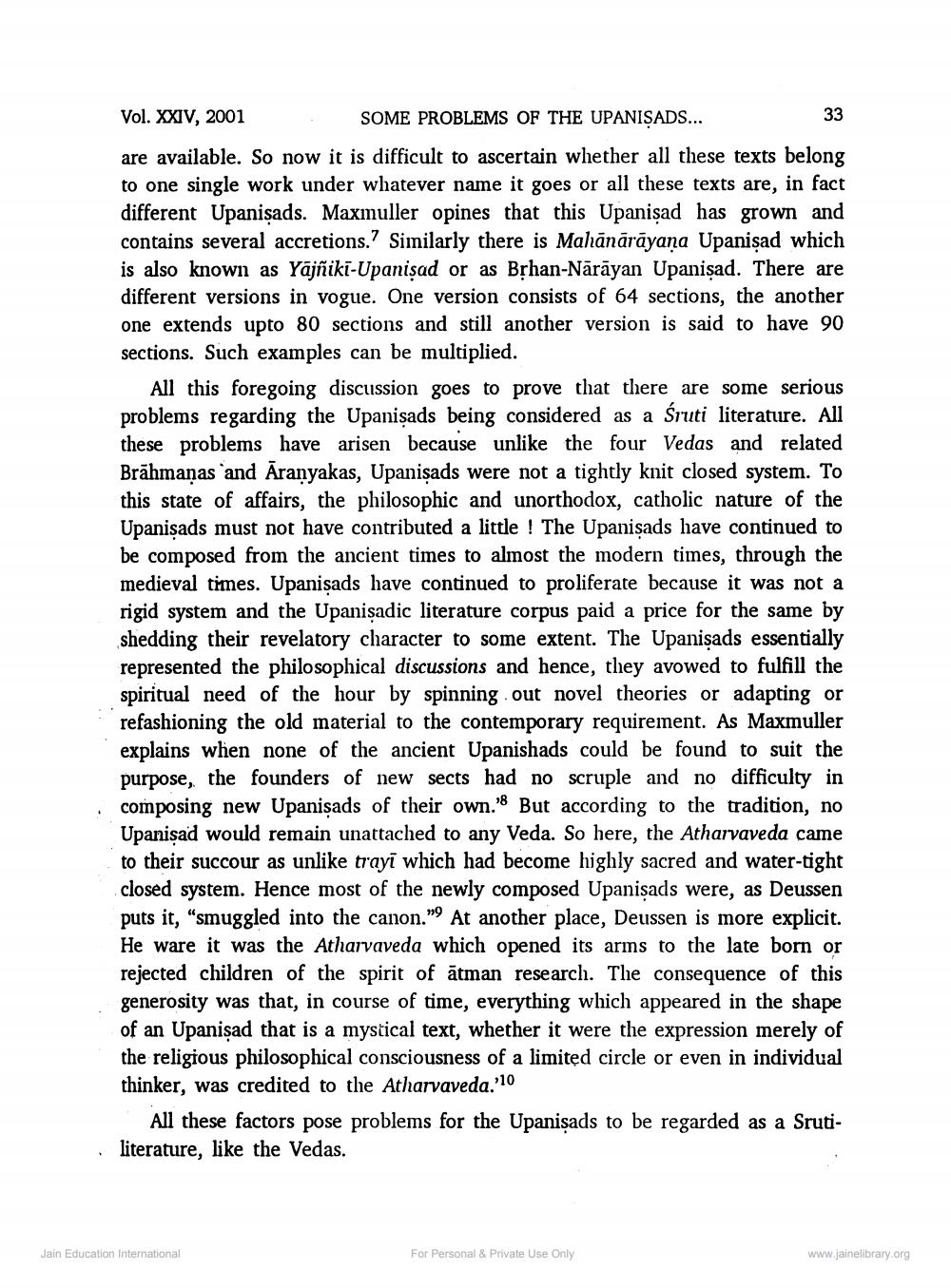________________
33
Vol. XXIV, 2001
SOME PROBLEMS OF THE UPANISADS... are available. So now it is difficult to ascertain whether all these texts belong to one single work under whatever name it goes or all these texts are, in fact different Upanisads. Maxmuller opines that this Upanişad has grown and contains several accretions.? Similarly there is Mahānārāyaṇa Upanişad which is also known as Yājñiki-Upanişad or as Bịhan-Nārāyan Upanişad. There are different versions in vogue. One version consists of 64 sections, the another one extends upto 80 sections and still another version is said to have 90 sections. Such examples can be multiplied.
All this foregoing discussion goes to prove that there are some serious problems regarding the Upanisads being considered as a śruti literature. All these problems have arisen because unlike the four Vedas and related Brāhmaṇas and Aranyakas, Upanişads were not a tightly knit closed system. To this state of affairs, the philosophic and unorthodox, catholic nature of the Upanişads must not have contributed a little ! The Upanişads have continued to be composed from the ancient times to almost the modern times, through the medieval times. Upanisads have continued to proliferate because it was not a rigid system and the Upanişadic literature corpus paid a price for the same by shedding their revelatory character to some extent. The Upanişads essentially represented the philosophical discussions and hence, they avowed to fulfill the spiritual need of the hour by spinning out novel theories or adapting or refashioning the old material to the contemporary requirement. As Maxmuller explains when none of the ancient Upanishads could be found to suit the purpose, the founders of new sects had no scruple and no difficulty in composing new Upanisads of their own.8 But according to the tradition, no Upanisad would remain unattached to any Veda. So here, the Atharvaveda came to their succour as unlike trayī which had become highly sacred and water-tight closed system. Hence most of the newly composed Upanişads were, as Deussen puts it, "smuggled into the canon."9 At another place, Deussen is more explicit. He ware it was the Atharvaveda which opened its arms to the late born or rejected children of the spirit of ātman research. The consequence of this generosity was that, in course of time, everything which appeared in the shape of an Upanisad that is a mystical text, whether it were the expression merely of the religious philosophical consciousness of a limited circle or even in individual thinker, was credited to the Atharvaveda.'10
All these factors pose problems for the Upanişads to be regarded as a Srutiliterature, like the Vedas.
Jain Education International
For Personal & Private Use Only
www.jainelibrary.org




